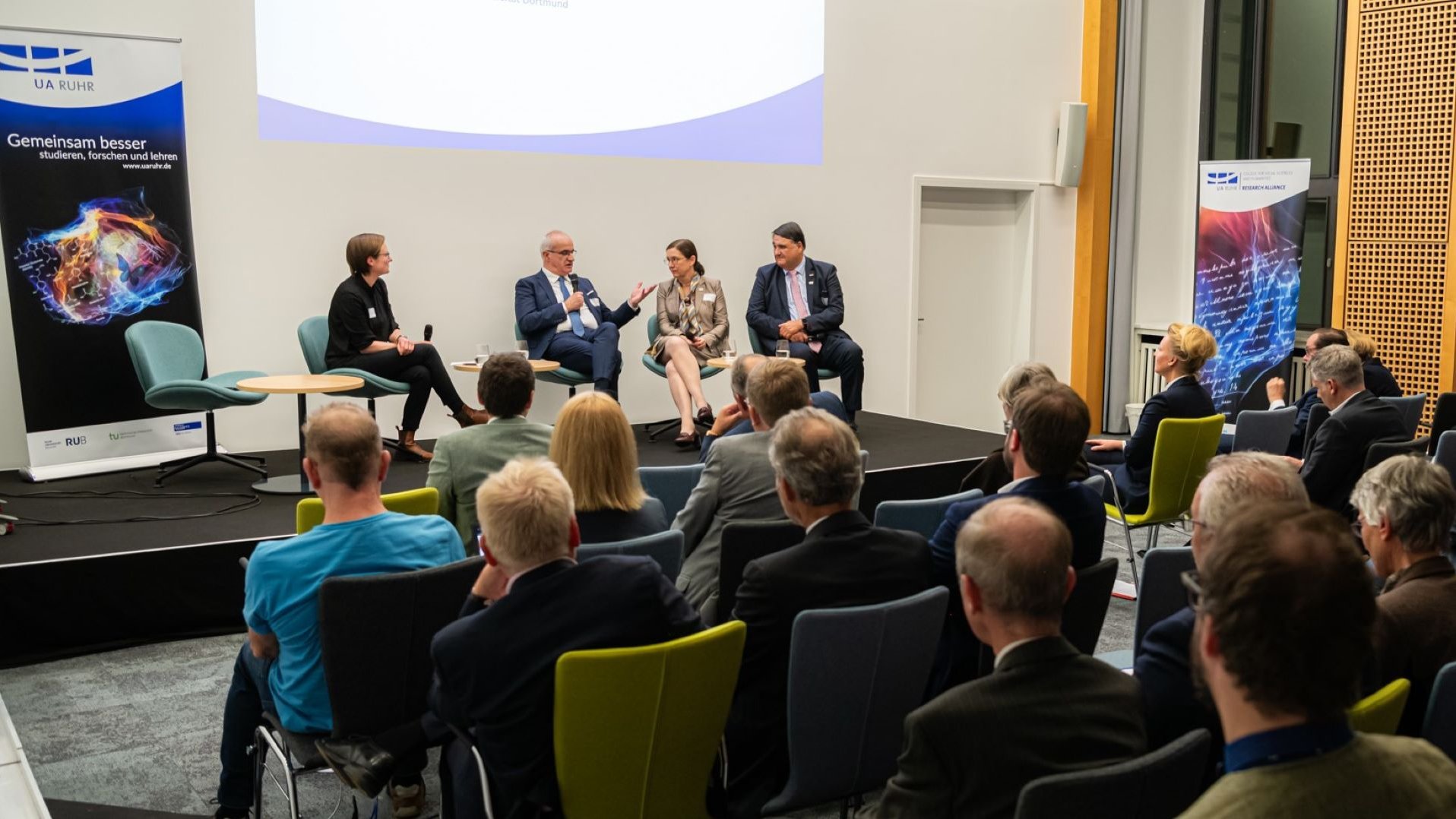News
Grand OpeningPowerful Start of the Research Alliance Ruhr
With around 100 guests from politics and science, the University Alliance Ruhr (UA Ruhr) celebrated the opening of the Research Alliance Ruhr in Essen on Tuesday, October 24. Founded in 2021 on the initiative of the Ruhr Conference, 50 joint research professorships are being created here to address pressing issues of the future. Science Minister Ina Brandes praised the successful collaboration between Ruhr University Bochum, the University of Duisburg-Essen and TU Dortmund University.

In the Research Alliance Ruhr (RAR), the three partners of the UA Ruhr pool their top international research. Four joint research centers are being established here, dealing with the topics of health and the environment, sustainable chemistry, new energy systems and data security. In addition, the College for Social Sciences and Humanities promotes open-topic international exchange. The state government is funding the construction phase from 2022 to 2025 with 123 million euros.
The opening ceremony of this cross-university project was held under the guiding question of how cooperation in science advances the Ruhr region - and vice versa. The venue in downtown Essen was already a sign of change: the joint college recently moved into a listed building on Lindenallee, where international guest researchers will be working from the spring. At the welcoming ceremony in the evening, Prof. Dr. Barbara Albert, UDE Rector, referred to the successful development work that the three partners have already accomplished in recent months: The first 14 professorships for the Research Centers have already been filled with leading international scientists, including from the Weizmann Institute of Science in Israel, the University of Cambridge in Great Britain, Portugal and Italy. "In the Research Alliance, we have appointed excellent, internationally renowned researchers to the Ruhr region. They are among the best minds in their fields. This shows how competitive we are. We are very excited about the impetus that will come from them."
"Unique in Europe"
Ina Brandes, Minister for Culture and Science of the State of North Rhine-Westphalia, emphasized in her address the importance of the Ruhr region for the innovative capacity of the state: "The research landscape in the Ruhr region with five universities, 15 universities of applied sciences, four Max Planck, five Fraunhofer and four Leibniz institutes is unique in Europe. Here, solutions for the major challenges of the future are conceived, developed and implemented. The RAR stands for cutting-edge research 'made in NRW'. It will make an important contribution to finding solutions to the pressing questions of the future and to securing people's prosperity."
Prof. Dr. Manfred Bayer, rector of TU Dortmund University, emphasized the strong foundation on which the Research Alliance Ruhr is built: "The three universities have been cooperating with each other in the UA Ruhr since 2007," said the physicist, who himself was appointed UA Ruhr professor in 2019. "Here, we bring our respective strengths to bear, exploit synergies and provide the space for cross-disciplinary scientific collaboration." As the densest higher education landscape in Europe, the Ruhr metropolitan region is predestined for collaborations in science. "With the Research Alliance, top international research has a new home in the Ruhr region, a region that stands for successful transformation," said Professor Dr. Martin Paul, RUB Rector. "With this experience, we will also master the current challenges and transformation tasks - not least thanks to the strong research that enables new solutions."
The RAR emerged from an ideas competition launched by the North Rhine-Westphalian state government at the Ruhr Conference. The opportunities offered by the Research Alliance Ruhr and the interdisciplinary research questions it addresses were discussed during the evening by university administrators, founding directors and new professors. The topics included how artificial intelligence can accelerate the search for new materials for the energy transition, how chemical research could help reduce greenhouse gases in concrete production, and how the renaturation of the Emscher river could help create social meeting spaces to prevent loneliness.
More about Research Alliance Ruhr
https://www.uaruhr.de/researchallianceruhr/
To the press release of the UDE

